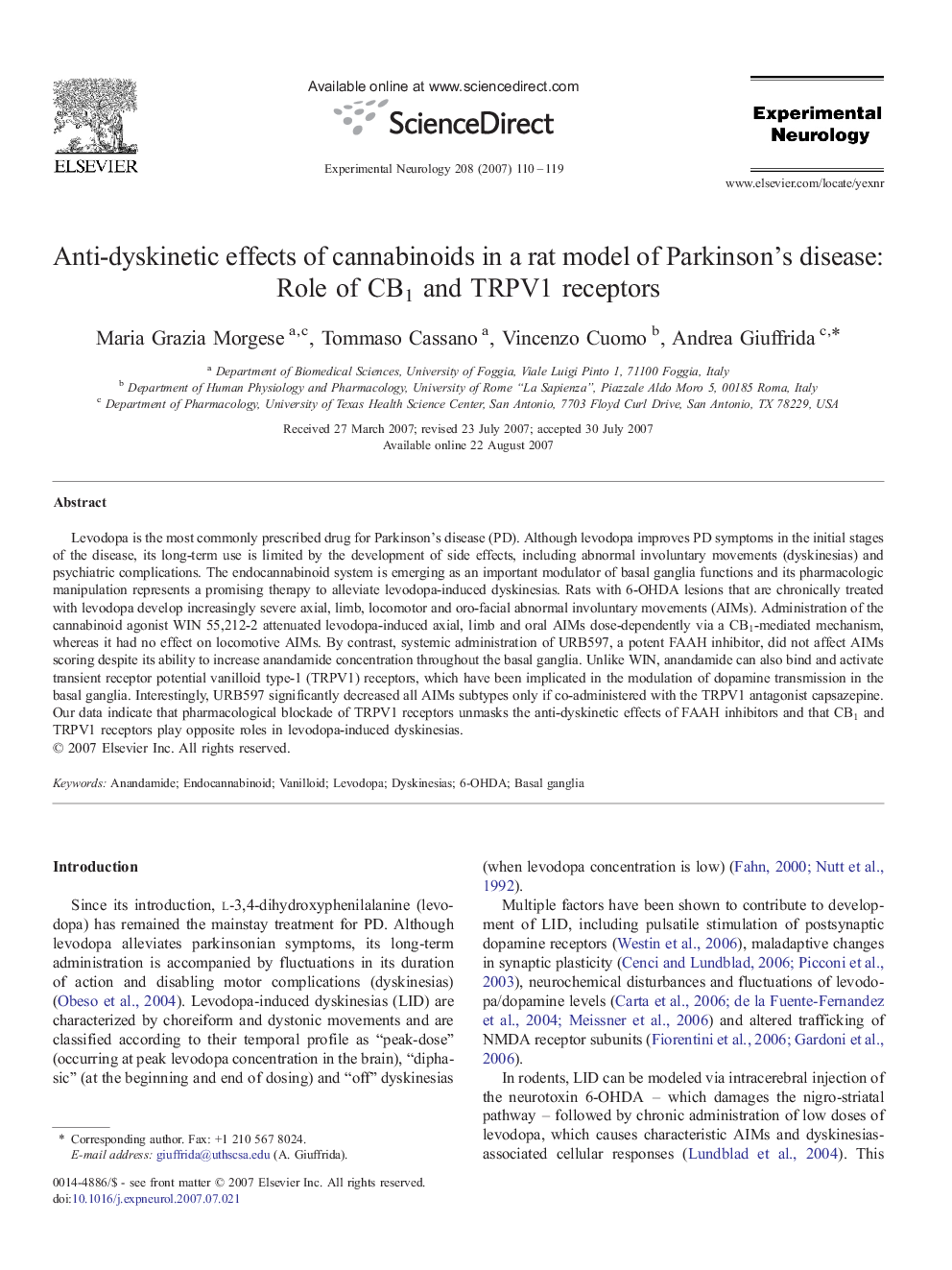| Article ID | Journal | Published Year | Pages | File Type |
|---|---|---|---|---|
| 3056897 | Experimental Neurology | 2007 | 10 Pages |
Levodopa is the most commonly prescribed drug for Parkinson's disease (PD). Although levodopa improves PD symptoms in the initial stages of the disease, its long-term use is limited by the development of side effects, including abnormal involuntary movements (dyskinesias) and psychiatric complications. The endocannabinoid system is emerging as an important modulator of basal ganglia functions and its pharmacologic manipulation represents a promising therapy to alleviate levodopa-induced dyskinesias. Rats with 6-OHDA lesions that are chronically treated with levodopa develop increasingly severe axial, limb, locomotor and oro-facial abnormal involuntary movements (AIMs). Administration of the cannabinoid agonist WIN 55,212-2 attenuated levodopa-induced axial, limb and oral AIMs dose-dependently via a CB1-mediated mechanism, whereas it had no effect on locomotive AIMs. By contrast, systemic administration of URB597, a potent FAAH inhibitor, did not affect AIMs scoring despite its ability to increase anandamide concentration throughout the basal ganglia. Unlike WIN, anandamide can also bind and activate transient receptor potential vanilloid type-1 (TRPV1) receptors, which have been implicated in the modulation of dopamine transmission in the basal ganglia. Interestingly, URB597 significantly decreased all AIMs subtypes only if co-administered with the TRPV1 antagonist capsazepine. Our data indicate that pharmacological blockade of TRPV1 receptors unmasks the anti-dyskinetic effects of FAAH inhibitors and that CB1 and TRPV1 receptors play opposite roles in levodopa-induced dyskinesias.
